It’s no secret that Australia is a beautiful country. Everyone knows, or at least has heard, about places like Uluru (Ayers Rock), the Great Barrier Reef, the Great Ocean Road and Sydney. The sheer abundance of remarkable places — natural as well as manmade — in Australia makes it impossible to know them all, let alone visit them all. There’s a beauty in that fact, for it ensures that there will always be another place left that’s worth visiting.
The following subjective, and by no means exhaustive, list includes some of the less-known — although you may recognise or even have visited some — cool places in Australia.
1. The Pinnacles
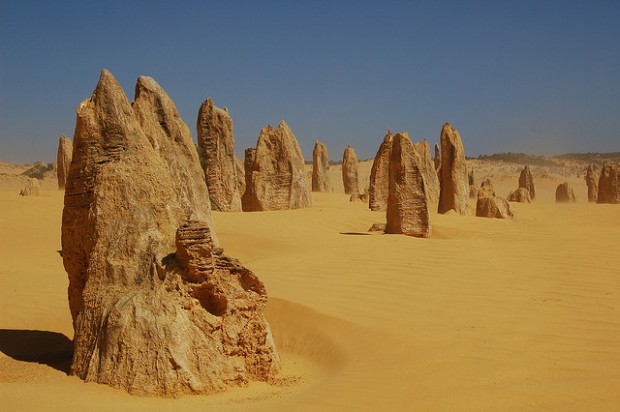 Image Credits: Sek Keung Lo
Image Credits: Sek Keung Lo
There are many odd natural landscapes in Australia, but the Pinnacles Desert may top them all. This yellow-coloured desert lies near the town of Cervantes in Western Australia, a short drive north of Perth. What’s unique about it are the thousands upon thousands of limestone pillars that dot the area. They come in every shape imaginable, from several-meter-high towers to stacks and domes. The Pinnacles are very accessible—there’s a loop drive through the desert, which can also be walked. The very best time to visit this lunar landscape is right before sunset.
2. Super Pit Gold Mine
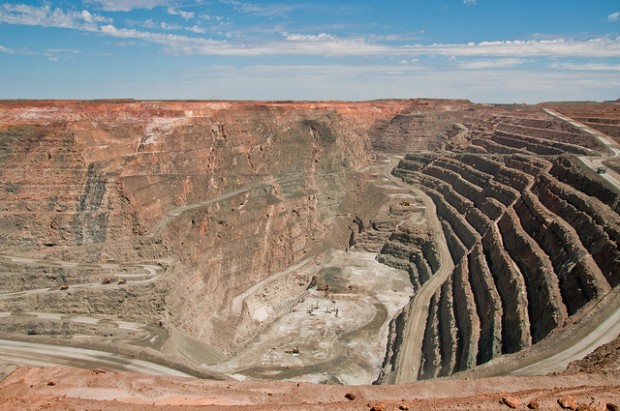 Image Credits: Graeme Churchard
Image Credits: Graeme Churchard
Another cool place in Western Australia is the Super Pit in Kalgoorlie, a large mining town in the middle of the Outback. Officially known as the Fimiston Open Pit, the Super Pit is the largest open gold mine in Australia. It’s truly enormous, measuring 1.5 kilometres wide, 3.5 kilometres long and no less than 570 metres deep. It is so vast that it can be seen from outer space.
3. Coober Pedy
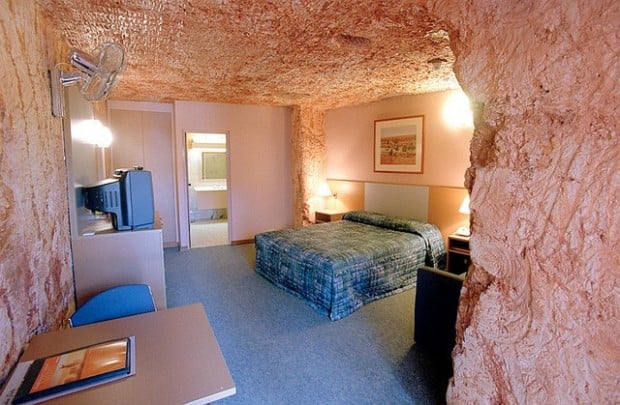 Image Credits: Smart Encyclopedia
Image Credits: Smart Encyclopedia
Another mining site, yet completely different, is Coober Pedy. This Outback town in the north of South Australia is where most of the world’s opals are mined and is often called the opal capital of the world. That’s not what makes this town so interesting though. Its claim to fame is that it’s essentially an underground town. Most residents live in so-called dugouts, which are underground houses. Living below ground is the only way to survive the scorching heat of the Australian Outback.
4. Bungle Bungles
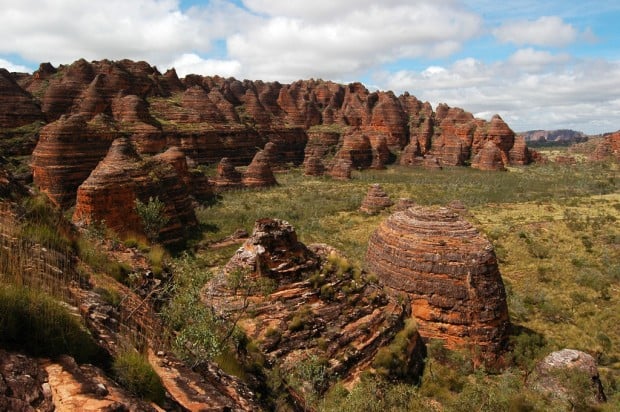 Image Credits: David
Image Credits: David
The otherworldly looking Bungle Bungle Range makes up most of Purnululu National Park in the northwestern corner of Western Australia. The entire mountain range consists of dome- or beehive-shaped peaks with alternating orange and grey sandstone stripes. The geology of the Bungle Bungles is so unique and important that the area has been declared a World Heritage Site by UNESCO. The rock formations were formed about 350 million years ago, while the area has been inhabited by Aborigines for more than 40,000 years. However, due to the remoteness of the area, it took until as recently as 1983 before it was discovered by “white people”.
5. Fraser Island
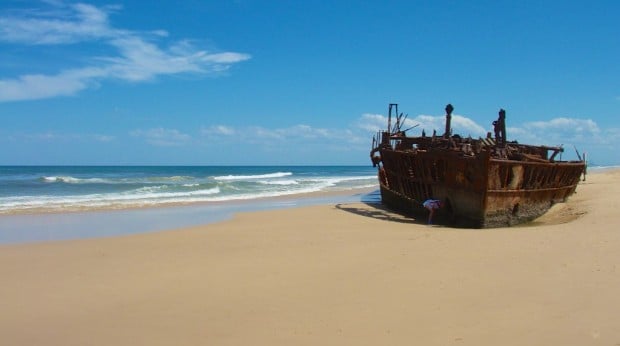 Image Credits: Paul D’Ambra
Image Credits: Paul D’Ambra
With a length of 120 kilometres, Fraser Island, off the coast of tropical Queensland, is the world’s largest sand island. The entire island is incredibly scenic, covered with dense lush forests, dotted with clear freshwater lakes and lined with stunning sandy beaches. It is a popular destination among off-road drivers, campers and eco-tourists.
Also Read: Top 10 Best Beaches in Australia
6. Murphy’s Haystacks
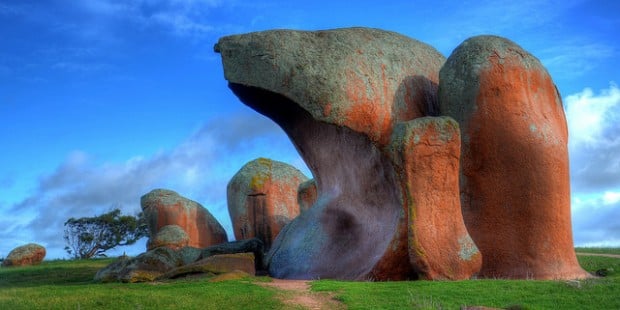 Image Credits: Chris Fithall
Image Credits: Chris Fithall
Chances are that you’ve never heard of Murphy’s Haystacks before. The reason is that they’re totally off the beaten tourist path. Located between Port Kenny and Streaky Bay on the Eyre Peninsula in South Australia, they are only visited by people traveling toward or from the Nullarbor Plain, a place that’s among the most desolate in the world. Murphy’s Haystacks is a collection of inselberg formations in the middle of a field. They’re thought to be more than 1.5 billion years old and are one of the coolest geological places in South Australia.
7. Wave Rock
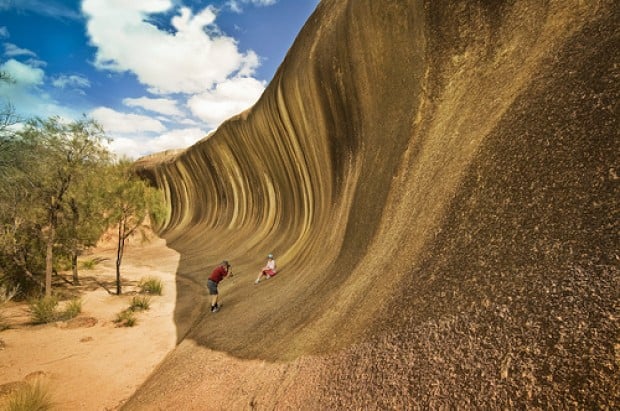 Image Credits: Tourism Western Australia
Image Credits: Tourism Western Australia
Here’s another geological wonder. Wave Rock is situated in the heart of the Wheat Belt of Western Australia, near the town of Hyden. The name of the rock formation couldn’t be more appropriate—the rock does in fact perfectly resemble a wave that’s about to crash. Wave Rock is about 14 metres high and 110 metres long. It’s not the largest of natural attractions in Australia, but it’s surely worth the detour.
8. Bunda Cliffs
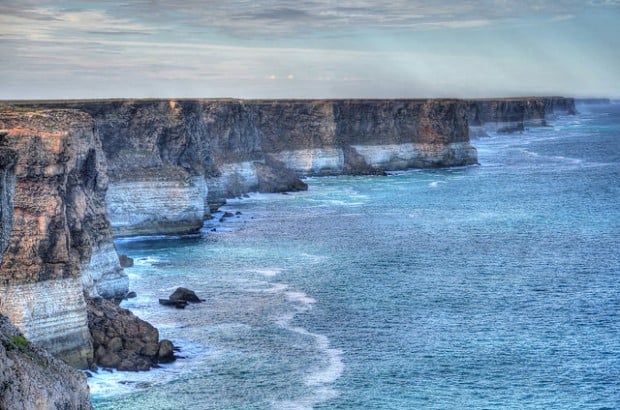 Image Credits: Chris Fithall
Image Credits: Chris Fithall
The Bunda Cliffs form the southern boundary of the vast Nullarbor Plain that covers a huge area in western South Australia and eastern Western Australia. It’s the largest single piece of limestone in the world. These cliffs are where the plain ends abruptly and drops into the Southern Ocean. They make up a 100-kilometre section of coastline in the Great Australian Bight, a section of sheer cliffs that is, in fact, the longest stretch of coastal cliffs anywhere in the world.
Also Read: 72-Hour Scenic Self-Drive Along Australia’s Great Ocean Road
9. Ningaloo Reef
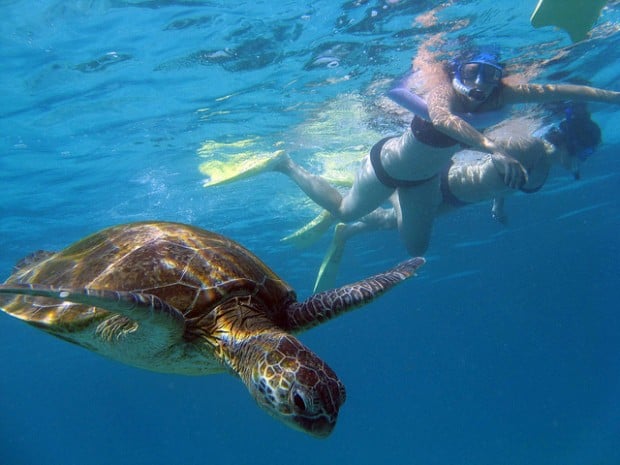 Image Credits: sharon mckellar
Image Credits: sharon mckellar
Ningaloo Reef could be considered the little brother of the much more popular Great Barrier Reef. While the Great Barrier Reef in Queensland gets overrun by tourists, the Ningaloo Reef in Western Australia is an oasis of peace. It is the largest fringing coral reef in Australia and the world’s only large reef that lies this close to a coastline, which is one of the reasons it is a UNESCO World Heritage Site. You can essentially just walk into the water and start snorkeling.
10. Hamelin Pool
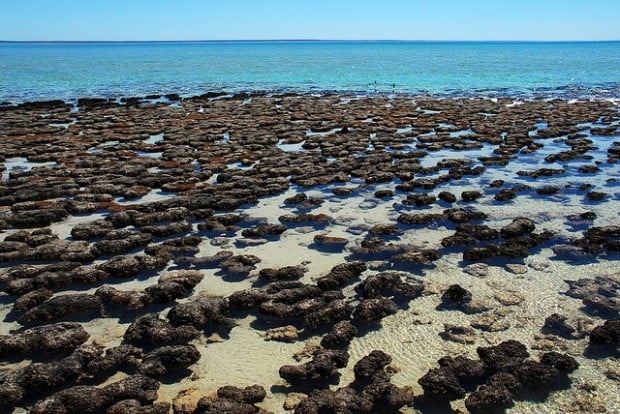 Image Credits: Robert Young
Image Credits: Robert Young
One of the true natural wonders of the world, Hamelin Pool is home to the largest number of stromatolites in the world—stromatolites are basically living fossils, 3.5 billion (!) years old and the very organisms that were responsible for creating an oxygen-filled atmosphere. The Hamelin Pool Marine Reserve is one of only a few places on earth where stromatolites can still be found, and it’s by far the most accessible one. To visit them, all you need to do is park your car and walk across the beach and onto the boardwalk.
Also Read: Which of These Places in Australia Would You Visit? We’re Not Judging




